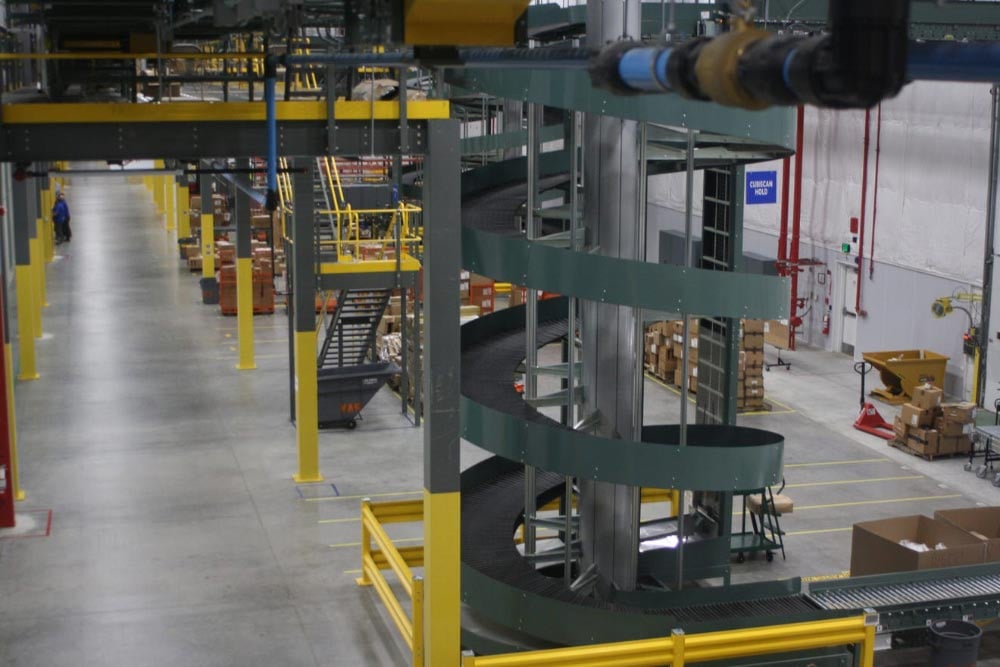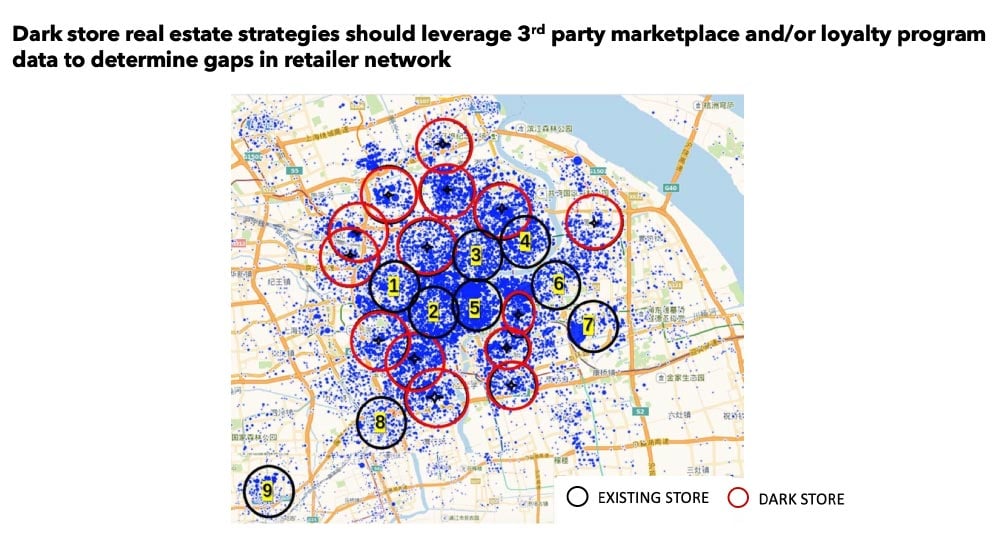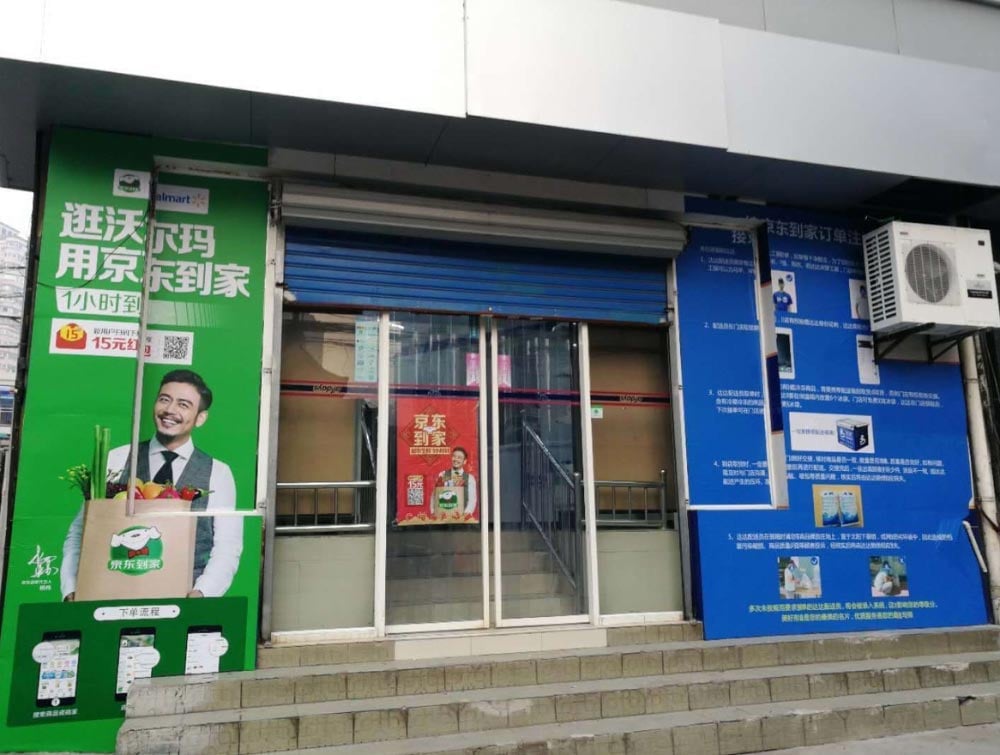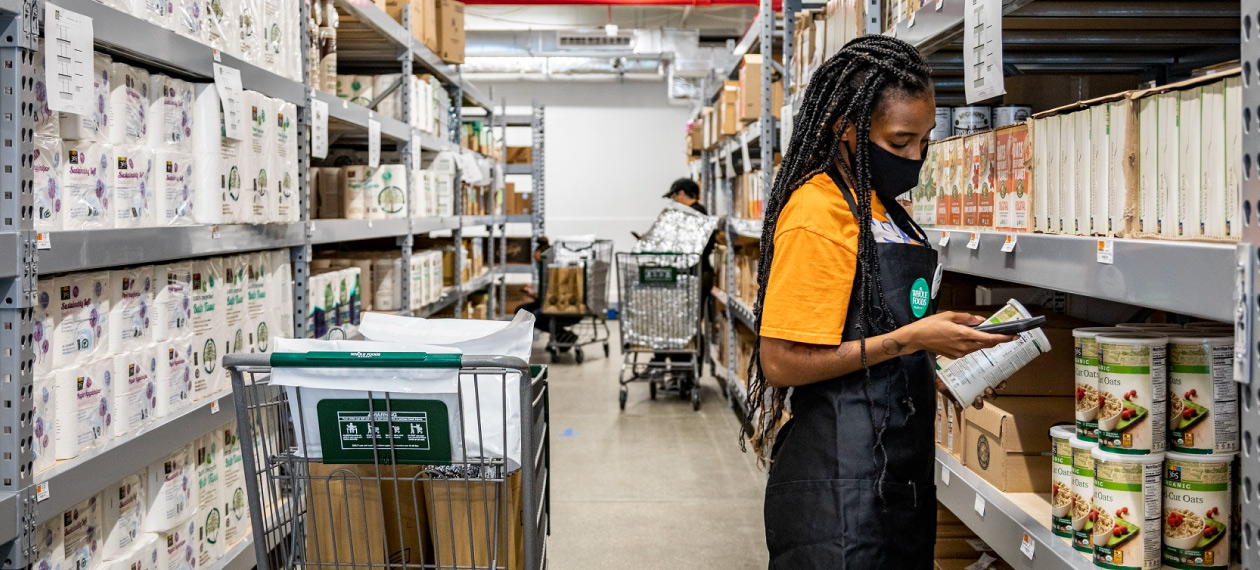Many retailers saw foot traffic at their physical stores grind to a halt earlier this year amid the COVID-19 pandemic. Their ecommerce business, on the other hand, experienced significant growth.
In fact, some retailers saw 20, 30, or even 50 percent growth in sales coming from their online channels, said Jordan Berke, founder and CEO of Tomorrow Retail Consulting, during a discussion at RetailSpaces (Almost) Live.
In order to meet this unprecedented influx, retailers around the country started using their existing stores to fulfill orders. Given the proximity of this real estate to customers, it was a valuable solution to a tricky situation.
Yet, these stores weren’t designed to be used in such a fashion, and, of course, customers would eventually return to in-person shopping. Using stores as fulfillment centers may not make a robust long-term strategy, should online sales growth continue as it has past the pandemic.
With all this in mind, the concept of the dark store has gained a lot of traction in the United States this year.
Tasked with growing Walmart’s e-commerce presence in China over the last decade, the topic of dark stores is something Berke is well versed in. During RetailSpace [Almost] Live, Berke provided a useful overview of dark stores and how — if created properly and under the right conditions — they can improve efficiency and output for retailers.
Dark Stores 101
While many retailers know their stores can make excellent fulfillment centers, the constraints of fulfilling online orders amidst a potential sea of in-person shoppers can be challenging.
“Look at Dick’s [Sporting Goods], Walmart… there are impediments to the design that help make picking in stores less efficient,” Berke said. “Many retailers are asking, ‘can dark stores improve picking efficiency and accelerate the profitability of my e-commerce business?’”
A dark store is a location dedicated only to online order fulfillment. They are often located near customers to offer quick delivery and, in some cases, pick-up of orders.
In the U.S., there are just 100 dark stores in operation, Berke said, noting that the concept is more widely used in China, where nearly 2,000 dark stores are located.
“We’ve learned the power of the format and the challenges and downsides if you don’t get it right,” Berke said.

The fulfillment center Dick’s Sporting Goods opened in NY last year
Who Should Open A Dark Store?
Any retailer filling a large volume of online orders through their physical stores could consider opening a dark store.
“They are going to go through what we call an online fulfillment maturity curve. That curve occurs,” Berke said, “when you see an existing store reaching capacity and it no longer has the ability to keep fulfilling without affecting the in-store customer experience or operation.”
For example, when a retailer begins receiving 800 orders a day in the physical store, it starts to max out the capacity of that location. At that point, Berke said, no matter the type of retailer — whether sporting goods or consumer electronics — a dark store is an option.
“It’s a viable approach regardless of category if your strategy is to keep that inventory close to the customer and offer rapid response,” he said.
Meeting The Criteria
As retailers explore the idea, Berke said there are three factors retailers must follow to ensure they get their dark store strategy right.
1. Assess Demand
Retailers exploring the idea of opening a dark store must first have adequate demand before making such an investment.
Deemed the 80% rule, Berke said dark stores should not be opened unless the retailer already has 80% of the order demand needed to break even.
“Do not open a dark store with the hope that demand will come,” Berke said. “This is not Field of Dreams, make sure you already have existing online order demand in the trade area before you open that store.”
Showing a sample dark store real estate map (below), Berke highlighted that the area clearly showed online order demand was being fulfilled by existing stores. However, areas surrounding those stores showed the potential for dark store zones.
“There’s enough demand to shift out of the existing store to get to 80% of its break-even point by the time it opens,” he said of the potential dark store.

Map showing potentiality for dark stores. Courtesy: Jordan Berke
2. Location Quality
Unlike physical store locations, dark stores are not open to the public and don’t need to occupy prime real estate.
Instead, Berke said retailers exploring dark stores should focus on lower-grade, industrial locations.
“The most successful dark store in China was built in a former appliance equipment repair warehouse,” he said, adding that the rent arbitrage between the site and the existing store was great enough to offset even the inefficiency one might get from having to traverse stairs to enter and exit.
“Find a low-cost space, don’t go into this with a retail site location mindset,” he said. “The lowest grade space can be the most functional.”

Example of a 4,000 sqft dark store in China
3. Start Simple
Though automation may be appealing to retailers setting up a new shop, it is not necessary in dark stores.
“Fit-outs need to start simple,” Berke said. “Don’t go into this with an automation strategy. This is very critical.”
While e-commerce teams can see this as an amazing opportunity to deploy all the bells and whistles of automation available to them, it could hinder their success in the long run.
Don’t do it, Berke implored, speaking from experience.
“I’ve seen more dark stores go from shiny, automated new objects to impairment charge within two years because people jumped in,” he said.
In fact, retailers should take two years to learn the operation model of a dark store before employing fancy automation measures.
Berke cautions that if retailers don't follow the above rules, they will risk falling into the 15% of dark store facilities that close in the first nine months.
“Dark stores have the potential to really accelerate retailers’ ability to serve online demand,” Berke said. “However, only start when these three rules are met in that trade area, and you can execute in a flexible, agile way. That’s how dark stores have been successful in markets they are working.”

Posted by
Physical Retail Reimagined.
RetailSpaces is a community for store development and design innovators.
March 29-31, 2026 | San Antonio, TX
Learn More!








Comments